In this post we look at the 4 best core exercises for home workouts, no equipment necessary.
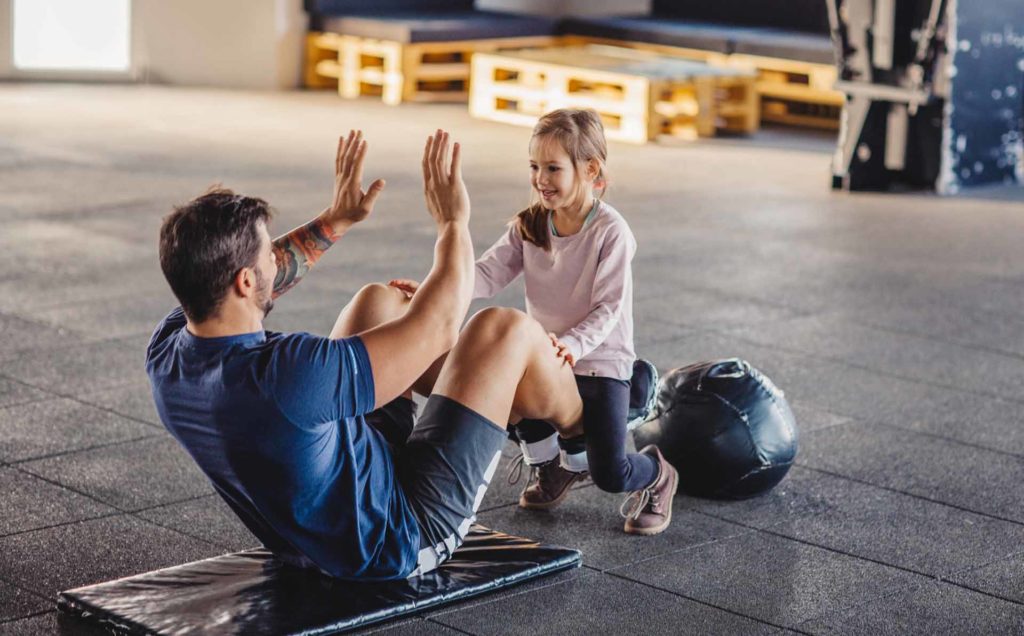
On day 4 of the official government lockdown here in London, we look at the most effective exercises for your core that you can do at home.
So, what is your core?
Whilst there’s no universally agreed definition, think of your core as the muscles that make up your torso.
This includes all of the anterior trunk muscles, which you’ll also see described as your abdominals or abs. As well as the muscles of your back, the erector spinae group among others.
To decide on the best way to challenge all of these muscles, think about what motions your torso is capable of.
There are 4 primary motions, as well as potential combinations of these.
Flexion
Shortening the distance between the front of your rib cage and the front of your pelvis.
Extension
Increasing the distance between the front of your rib cage and the front of your pelvis.
Side bend
Decreasing the distance between the lateral aspect of your rib cage and the lateral aspect of your pelvis on one side.
Rotation
Rotating your torso around the axis of the spine. This can be your rib cage moving on a static pelvis, or your pelvis moving on a static rib cage.
Trunk flexion exercise
The most commonly used exercise to challenge the trunk flexors is the crunch. Not to be confused with the sit up which also involves motion at the hip.
In the crunch you are simply lying on your back and moving the bottom of your rib cage down towards your pelvis.
What could go wrong? Plenty. In fact I’ve compiled a list for you.
1) The first mistake is using speed to lift your shoulders off the floor. This is sometimes accompanied with motion at the elbow joint. The person quickly extends their elbows to assist the motion of their trunk.
2) Even better is the use of a plate or medicine ball to make the exercise harder, which in effect actually makes it easier. The individual throws the weight forwards, the momentum of which assists them in moving their shoulders from the floor.
3) My favourite however is the crunch on a Swiss ball. You will see people simply bounce themselves up into the top position with zero stimulus to the target muscles.
The theory behind the Swiss ball crunch is that the shape of the ball will encourage trunk extension. In other words you’ll be asking your trunk flexors to contract over a greater range of motion than they would if you performed the exercise from the floor.
This is a good idea providing:
a) you have that amount of trunk extension available.
b) you don’t then use the ball like a trampoline.
A safer and more effective way to achieve this is with one of the most underrated pieces of gym equipment available, a folded towel.
How to optimise the crunch
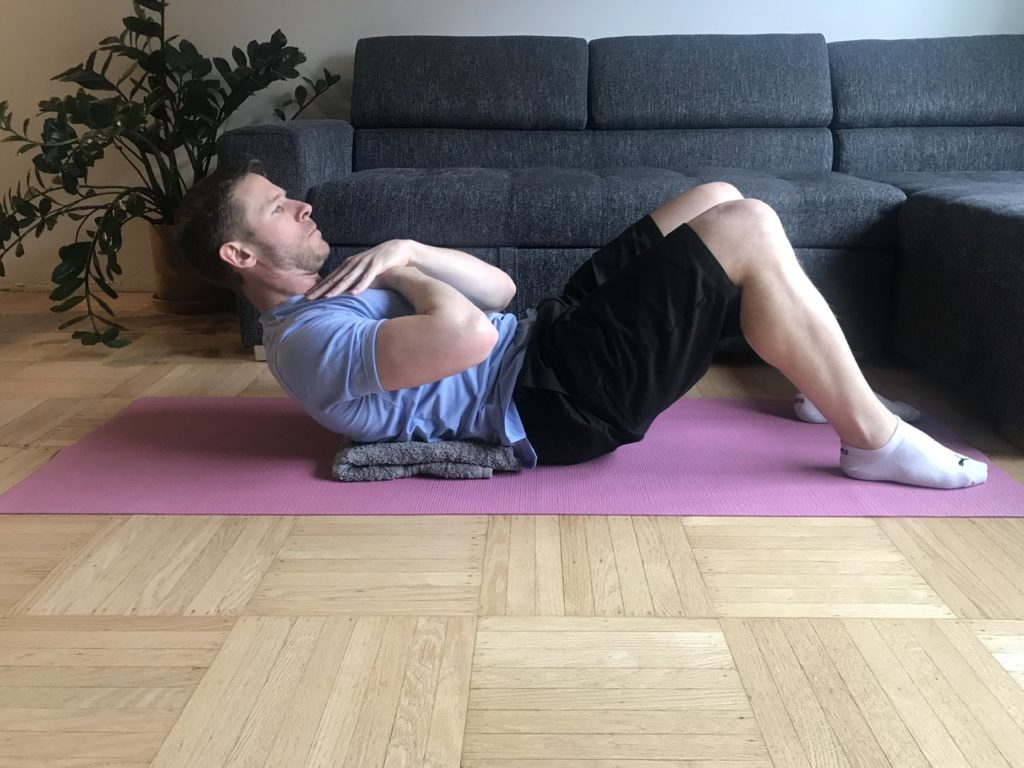
Find a relatively thin towel you can easily fold. Big fluffy ones don’t work well for this. Find the ones you stole from the Travelodge, rather than the Ritz.
Now lay down on your back with your knees bent. Arch your lower back away from the floor and slide your hands in the space created.
Fold the towel until it fits in the gap between the floor and your lower back. Note it should also be clear of the top of your pelvis.
If you get the towel width right, you should be able to just about arch your lower back away from it. Air on the side of caution to begin with, as your lower back may not appreciate being bolstered in end range extension. This is especially true if you don’t train that motion often. We’ll come to that shortly.
Next you need to decide where to put your arms. Folded across your chest is a good starting point. When you need to make the exercise harder, move them up towards your head.
Now you’re ready to begin
Slowly generate tension in your abdominals. Your six pack muscle (rectus abdominus) is going to be active here but also think about both your internal obliques and external obliques which will also contribute.
As you ramp the tension in those trunk flexors, your shoulders will begin to lift off the floor. Now focus on slowly bringing the lower aspect of your rib cage down and in. Your aim is to get your rib cage as close to your pelvis as you possibly can.
Once you come to a stop, pause there for a second and check if you can get just one more millimetre. Can you? ARE YOU SURE?
Ok fine, now slowly lower your shoulders back towards the floor. Once you arrive there, maintain tension in your abdominals and repeat the process.
How many did you do? I got to 10 before my abdominals were engulfed in flames. Perfect.
Trunk extension exercise
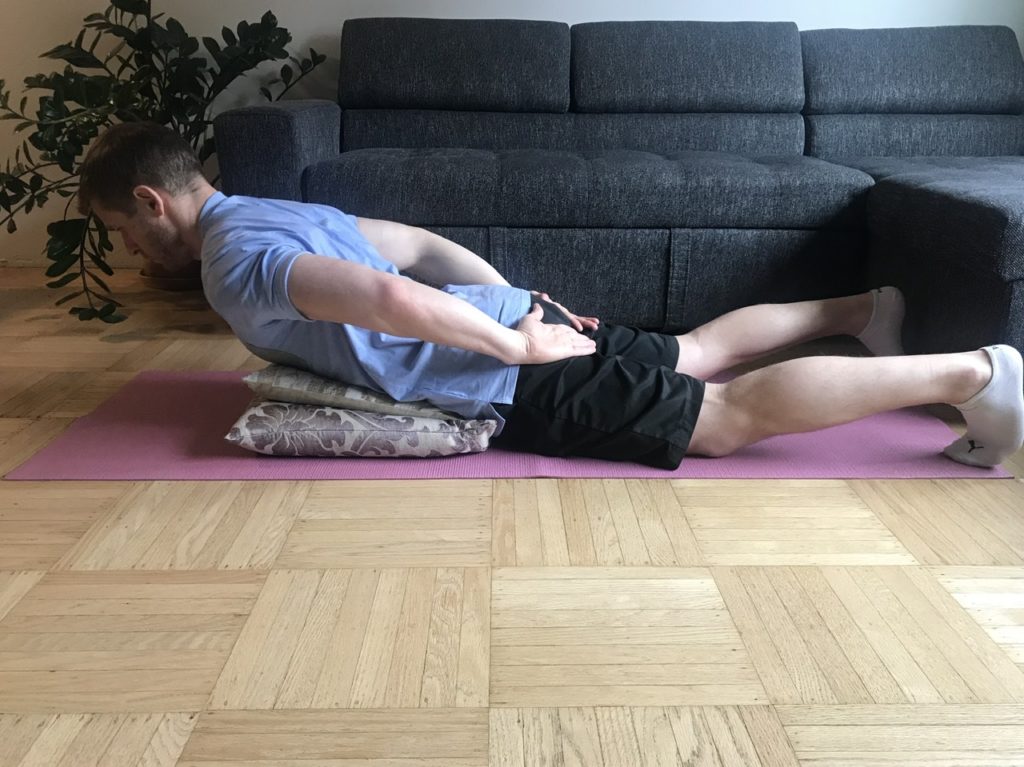
Here our goal is to challenge the muscles of your lower back, which is comprised of the erector spinae group. This time we’re going to use a pillow for assistance.
How far you’re able to flex your trunk, will give you an indication how much pillow you’ll need. Perform a crunch and eyeball the gap between the bottom of your rib cage and the top of your pelvis.
It’s this shape the pillow should ideally encourage.
It’s worth noting that your lumbar spine doesn’t move into flexion. Even when your trunk is completely flexed forward, the furthest your lumbar spine will go is straight, as you can see from the x-ray below.

Place the pillow under your stomach but above your pelvis. Your belly button represents the centre of your lumbar spine so try and make sure this in the middle of the pillow.
Once you’re in position, slowly lower your trunk until your nose touches the floor. Remember health and safety is important in these times so resist the temptation to lick the floor.
Place your hands on your butt and monitor it for tension as you slowly begin to extend your spine. If you feel your butt contracting, try to relax it. This will increase the effort required from your lumbar spine muscles.
Your goal is to close the gap between the bottom of your rib cage and the back of your pelvis.
Once you reach a stop, pause for a second before slowly lowering your nose to just above the floor again. Repeat until your lower back muscles begin to fatigue.
As with the crunch, if you need to make the exercise more difficult, shift your arms so they’re level with your head.
Side bend exercise
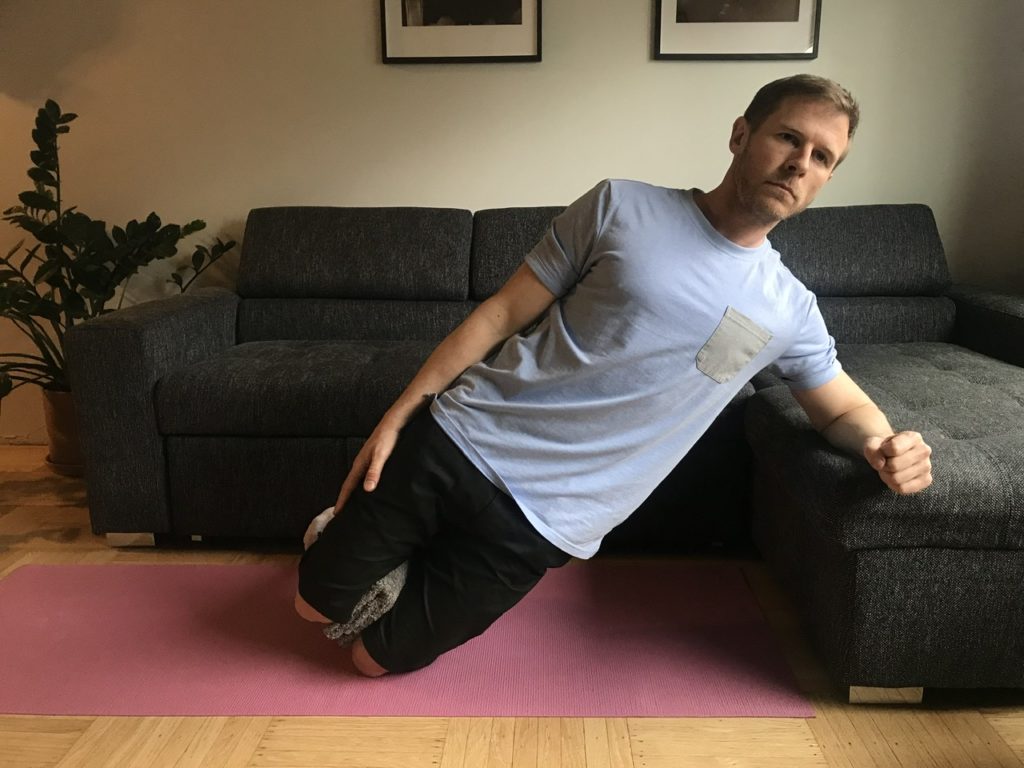
The muscles that flex and extend your spine are also involved in side bending it. Here we’re going to use an adapted plank to provide a challenge.
A standard side plank will test your side benders, but it will also provide a significant challenge to your shoulders and hips. Shortening the span of the bridge as it were, will enable you to better focus on the target muscles.
You also get to use your couch to exercise which somehow feels a little subversive no? Just me then? Cool.
Set yourself up side on to your couch with a towel (of course) placed between your knees to keep your hips in a neutral position.
If you have a history of shoulder problems, you can remove that joint from the equation altogether by resting your rib cage directly on the couch itself.
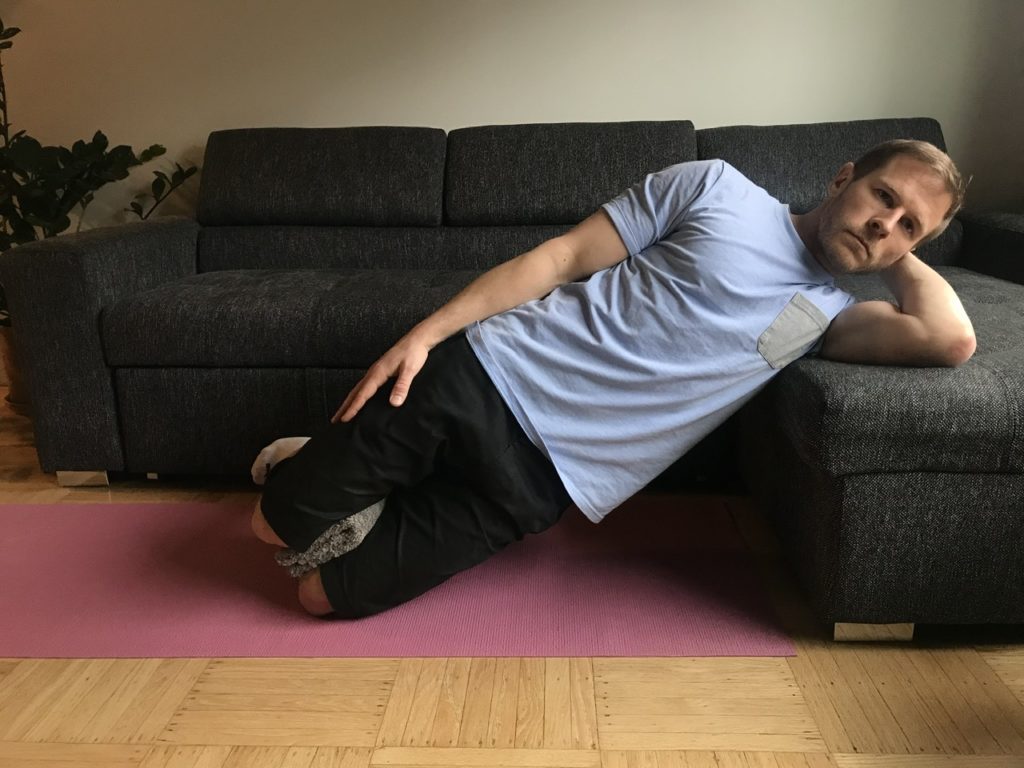
Otherwise prop yourself up on the couch with your elbow.
Once in position make sure your trunk isn’t rotated. We want the majority of those side benders under the bridge supporting it.
Now slowly begin to lift the side of your trunk away from the floor. Imagine somebody has a lighter under the space where your rib cage ends and your pelvis begins and you’re trying to move that area away from the flame.
To clarify. I said IMAGINE. Please don’t let your significant other set you or your couch on fire by actually doing this. Health and safety people, health and safety.
Hold that contraction 10 seconds before slowly releasing your pelvis back towards the floor. Repeat a further 6 times.
Trunk rotation challenge
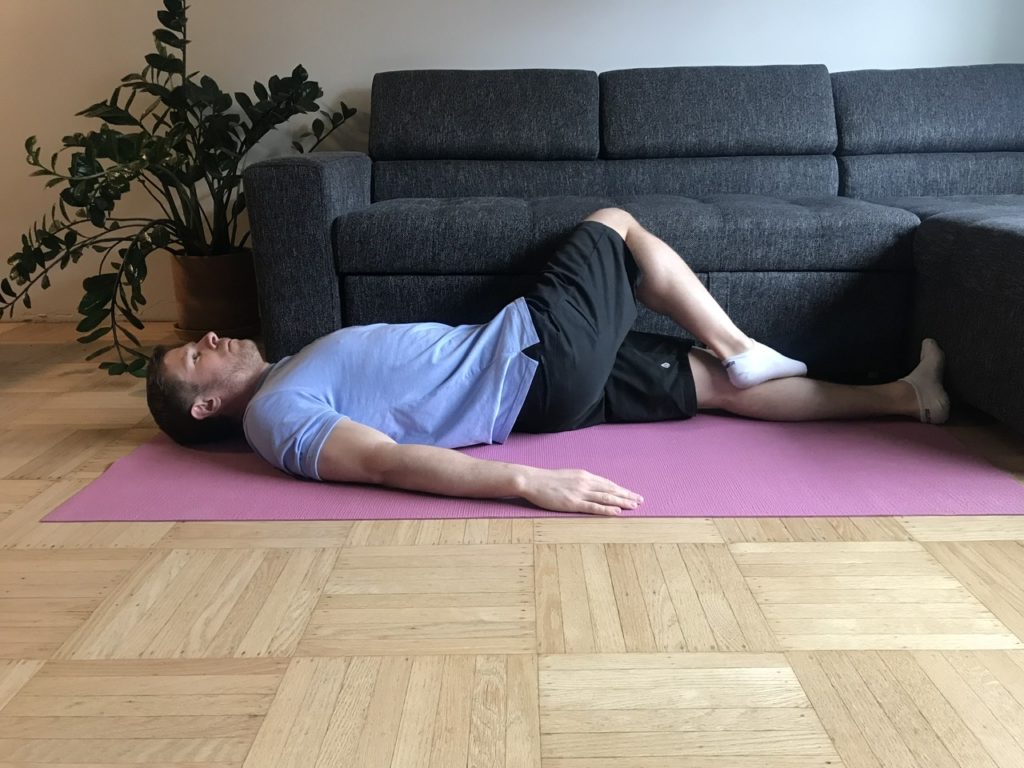
As I mentioned earlier, rotation of your trunk can be your ribcage rotating on a static pelvis, or your pelvis rotating on a static rib cage. With this exercise we’re going to use the latter arrangement.
Lay down on your back with a wall or couch close by your side. Place the foot of the leg furthest from the wall on top of your other knee.
Now slowly begin to rotate your pelvis towards the couch until your knee makes contact with it.
Adjust your position if your rib cage moves before your knee contacts the couch, or if your feel you could rotate further.
Once you have the perfect position, rotate across once more until your knee touches the couch. This time keep rotating your pelvis as if trying to push past the couch for 10 seconds.
You should feel muscles at the front and side of your trunk contracting.
Repeat a further 5 times.
Summary
There you have it, 4 core exercises that require no equipment and provide a meaningful challenge to the muscles targeted.
Use them in combination with the lower body programme from the previous post and you’ll exit quarantine popping.
Next week in part 3 of this home exercise series, we look at how to perform the perfect push up.
Lastly a big thank you to George for the images. I highly recommend his Instagram page for innovative exercise ideas and his website.